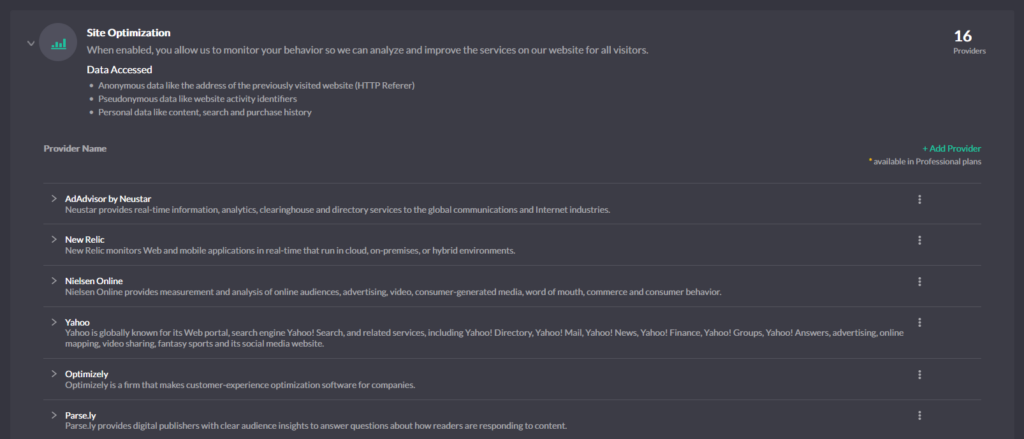What is Autoblocking?
Autoblocking is one of the most important features of Cookie Compliance.
External services are implemented on websites using a variety of methods – scripts, iFrames and in some cases CSS files. When they are executed and used, they save data in the browser and/or send it to external servers. Most often the data is saved in the form of cookies.
Autoblocking helps you comply with prior consent rules under GDPR and other data privacy laws; in order to be compliant, your banner must capture a valid consent from a visitor before setting or sending cookies.
Through Autoblocking, recognized scripts and iFrames are blocked until the site visitor’s consent is captured. When this happens, the Cookie Compliance banner reads the consent configuration and unblocks only those services that fall into the categories the user has consented to.

Purpose Categories
Autoblocking is based on an internal database of categorized third-party service providers. At Cookie Compliance, we use a universal typology of four categories of services depending on the purpose of data use:
- Basic Operations – necessary to make sure the website is secure and working properly
- Content Personalization – used to create a user profile in order to deliver personalized content
- Site Optimization – used to monitor visitor behavior so that the services on the website can be analyzed and improved
- Ad Personalization – allows to share data with advertising partners and build visitor profiles about you across multiple websites
Each of the providers consists of defined URL patterns so that Autoblocking is able to find it on the website and assign it to one of the purpose categories.
Key Definitions:
- Provider: A Provider, or service provider, is the name of the company storing cookies for certain functional, analytics, or marketing purposes.
- URL Pattern: A URL Pattern is a basic structure used to identify specific services running on your website
- iFrame: URL Pattern used to embed other content or media on your website pages
- youtube.com/iframe_api is an iFrame pattern used by Youtube
- Script: URL Pattern used to embed executable code or data, usually a JavaScript code
- googlesyndication.com/pagead/js/adsbygoogle.js is a script used by the Google Ads
- iFrame: URL Pattern used to embed other content or media on your website pages